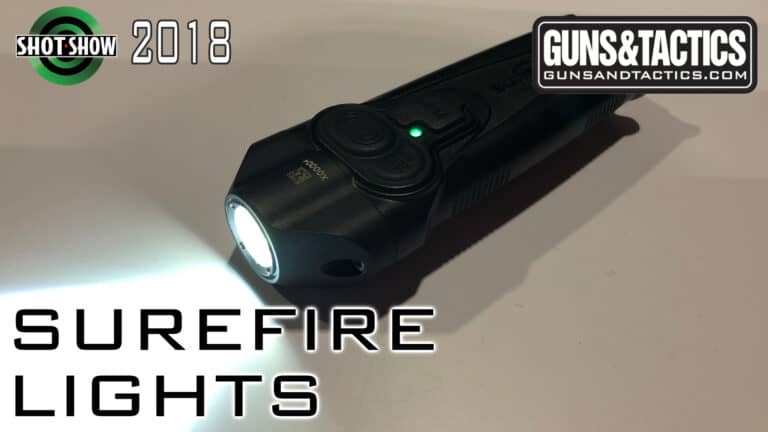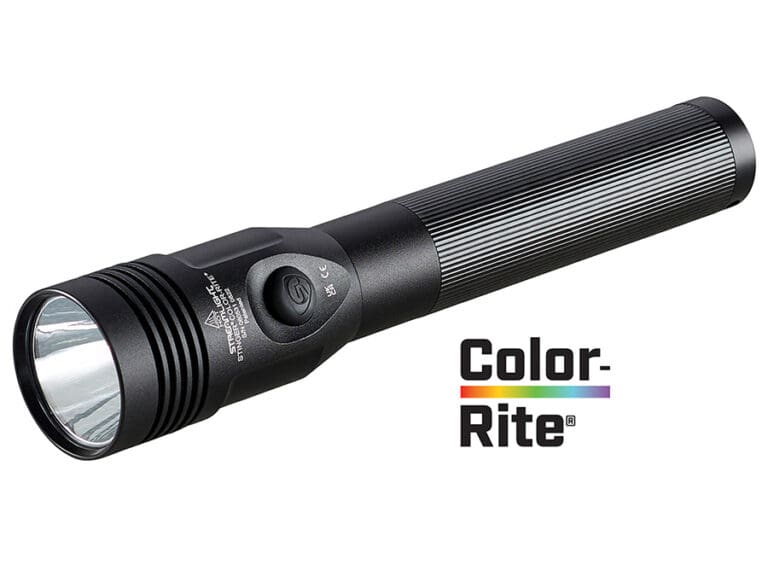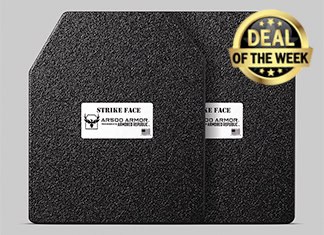PASSION APO Spotting Scope—Compact Power & Exceptional Clarity
German Precision Optics’ Passion APO is a high-performance compact spotting scope designed and…
German Precision Optics’ Passion APO is a high-performance compact spotting scope designed and…
Mesa Tactical, well-known for its pro-grade tactical shotgun accessories, now bridges the gap…
North Kansas City’s TriStar Arms has introduced the APOC, a compact 4-inch-barrel, 9mm…
The Mod-Navy Qual I’ve been doing this qual (or drill, or whatever the current nom…
• Built for road trips and off-road use• Manual transmission equipped• Wrapped in MultiCam Arctic…
I designed the Button Man to give shooters a low-round-count, low-light-engagement drill that involved both…
The next time you’re out and/or sitting around drinking with your buddies and feel the need to stir up some controversy, throw out this question: Will adding a suppressor to your weapon affect its accuracy? Then sit back and watch the fur fly and the beer spill, assuming your buddies are firearm aficionados.

If they aren’t, they’ll probably just stare blankly at you, especially since Hollywood has trained them to think of suppressors as “silencers.”
I’ve seen opinions expressed on both extremes of this question. Some will state flatly that suppressors don’t impede a round’s ballistics; in fact, some insist that suppressors actually increase the round’s velocity. Others will insist that of course a suppressor has an effect; any change you make to a weapon will shift its point of impact (POI).
The truth, as is so often the case in life, is somewhere in the middle, and as any politician knows instinctively, the exact words used to ask the question can make a huge difference.
Regarding ballistics, it’s important to recognize that this single term encompasses many different factors. (Check out my previous articles on ballistics fundamentals if you haven’t already.) For muzzle velocity specifically, suppressors produce an effect known as freebore boost. In my ballistics articles, I explained how barrel length increases velocity up to a point since the expanding propellant gases have more time to accelerate the bullet. Well, a suppressor adds to that time, so particularly on short-barreled weapons (pistols, submachine guns, and carbines) you’re likely to see a boost. (Serious but not laboratory-quality experiments have measured an increase of about 50 fps.)
“Suppressors look cool, chicks like cool, and no one wants to blow a shot when a hot chick is checking out their suppressed gun, so you tend to not blow shots so much.”
A suppressor also reduces the amount of air turbulence as the round exits the muzzle, which helps both velocity and accuracy. A third benefit is a reduction in recoil, which should improve accuracy and is particularly beneficial for follow-on rounds when firing rapidly.
However, it stands to reason that changing a round’s velocity will also change its trajectory, even if in no significant way other than changing the point of bullet drop. So clearly a suppressor affects ballistics, even if it tends to do so in positive ways. As I said before, words matter; a lot of people use “change” when they really mean “degrade,” forgetting that change can be positive, too.
One unavoidable fact is that the weight of the suppressor (whether that’s three ounces or thirty) is going to affect barrel harmonics (that is, it will introduce the slightest degree of “droop” in the barrel), and barrel harmonics are one of the things that give a weapon its individual zero. The lighter the suppressor, the less pronounced the effect, but it’s there nonetheless. That additional weight is also going to affect your hold on the weapon, causing more slight changes to the POI.
Experimentation has also shown that hot suppressors perform differently from cold ones. The greatest freebore boost comes from hot ones, which stands to reason since a cold suppressor is stealing heat from the propellant gases and slowing their rate of expansion. Interestingly, a hot suppressor also tends to produce the most variance in the degree of freebore boost, making velocity less predictable. You can probably guess what that does for a consistent POI.
So we’ve got a lot of little effects generated by suppressors. What do they add up to? By now you might be able to guess that generally speaking, a suppressor isn’t going to negatively affect the ballistics of a round. What it is going to do is shift the point of impact for a weapon that has been zeroed to the shooter without a suppressor.
The effect is much more pronounced at longer ranges; at short range you’re typically looking at half a minute of angle (MOA) or less, which won’t exactly jeopardize your chances of hitting your target. But if you’re talking the ranges typical of long guns, you’ve got to account for the difference. You can get reasonably consistent POIs with a suppressor, but they won’t be the same ones you shoot without it. The ideal solution is to have optics that can be switched between two zeroes; a more practical one is to have a second dope table for shooting with the suppressor so that you can dial in adjustments appropriately.
So with short-range engagements—CQB in particular—the suppressor isn’t going to make enough difference to matter. You should be cognizant, however, that if you equip a typical assault rifle with a suppressor and encounter a situation that demands a quick shift from close-quarters engagement to a longer-range shot, you’ll probably want to ditch the suppressor (time permitting, of course) before you take it.
Not to complicate matters after all that, I have to add that ammo choice can play a huge role. Not all noise comes from muzzle blast; the “crack” of a high-velocity round is actually a miniature sonic boom, and if you’ve spent any time as a target monkey on a downrange feedback range, insulated from the noise of the firing line but listening to bullets speed by overhead, you know what I mean. That crack can be eliminated with the use of subsonic ammunition. Even the cycling of the action makes noise. (In many cases subsonic rounds will solve that problem, too, as they do not produce enough gas pressure to cycle the bolt.) Of course, if you’re shooting a target 400 meters away with a long gun, the clack of the bolt probably isn’t a big concern for you, compared to shooting from five meters away with a pistol. So while I certainly don’t want to insult anyone’s intelligence, I’m obliged to point out that such rounds will have significantly different ballistics than standard loads.
Suppressors have legitimate tactical uses, and you need not worry about wrecking your accuracy by using one. Just remember two key factors—the difference is no big deal at short range but matters at long range, and your weapon has two different zeroes with and without a suppressor—and you’ll do fine. In parting, I have to leave you with my very favorite rationalization of why suppressors improve accuracy, courtesy of a guy posting on a firearms optics forum:
“Suppressors look cool, chicks like cool, and no one wants to blow a shot when a hot chick is checking out their suppressed gun, so you tend to not blow shots so much.”
Hey, man, whatever works.

This article is provided courtesy of Tactical-Officer.com
Welcome to http://tactical-officer.com, the professional operator’s choice of online resources and the web’s first all-online, interactive publication designed from the ground up for the tactical law enforcement professional.
Guns & Tactics is an online media outlet that focuses on the firearms community, not just firearms and gear but also quality training, technical break downs and enlightening presentations.

In todays video we will be checking out the parts to my Pandemic build # 1. This is a super short 5″ 300blk backpack, concealed carry gun.
What time is it? Time for another gear review with Guns & Tactics, that what! Preferred by police and tactical operators throughout the industry, the 5.11 Tactical Field…

Chris chats with Andrew about the new and updated lights coming out from Surefire. Surefire

Streamlight Inc. introduced the Stinger Color-Rite, a compact, powerful, rechargeable, 500 lumen LED flashlight.
Check out our coverage of PWS at SHOT Show 2018 here. **Press Release** Primary Weapons Systems released multiple new product lines and updates at SHOT Show last month….

This weeks Deal of the Week takes us to AR500 Armors BOGO sale. A great entry into the world of body armor without breaking the bank.
© 2025 UN12 Magazine
© 2025 UN12 Magazine
Wait! Don’t forget to